Weighing the Pros and Cons of Underfloor Heating
Underfloor heating has become a popular alternative to traditional heating systems in recent years, offering numerous benefits and drawbacks. This article will discuss the good and bad points of underfloor heating, looking at its benefits, drawbacks, and what it involves.
Introduction to Underfloor Heating
Underfloor heating warms up a room by placing heating elements under the floor. These elements can be pipes or electric mats. The system provides a comfortable temperature in the room.
You can install this type of heating in new buildings or retrofit it into existing ones. The heated floor warms the room through radiation, providing a comfortable and cosy atmosphere.


Components of Underfloor Heating:
A typical underfloor heating system consists of the following components:
- Underfloor Heating Manifold: A manifold is the central hub of the system, connecting the individual pipes and distributing the heat evenly throughout the space. It’s usually located in a boiler room or utility closet.
- Underfloor Heating Kit: A kit typically includes the necessary components, such as pipes, fittings, and manifolds, to install an underfloor heating system.
- Underfloor Heating Pipe: The pipe is the primary component of the system, responsible for distributing heat throughout the space. It’s usually made of PEX (cross-linked polyethylene) or PE-Xa (cross-linked polyethylene with improved properties).
Types of Underfloor Heating:
Wet Systems:
- Heat Generation: A boiler or heat pump generates hot water (usually between 40°C to 60°C).
- Pipe Installation: The hot water travels through a network of pipes installed under the floor.
- Heat Transfer: The heated water warms the floor through conduction, warming the space above.
- Cooling: The cooled water then goes back to the boiler or heat pump for reheating.
Dry Systems:
- Electricity Supply: Electricity is the supply and fuel to the heating elements, such as electric mats or cables.
- Heat Generation: The electric heating elements convert the electrical energy into heat, which transfers to the floor.
- Heat Transfer: The heated floor warms the space above through radiation and convection.
- Thermostat Control: The system comes in a pair with a programmable thermostat which is usually wall hung.
Pros of Underfloor Heating:
- Energy Efficiency: Underfloor heating is often more energy-efficient, as it warms the floor and radiates heat into the room. This can lead to significant energy savings.
- Comfort: Underfloor heating provides a comfortable and even heat distribution, stopping cold spots and hot air circulation.
- Space: Underfloor heating systems are smaller than radiators, ideal for small spaces or areas with limited wall space.
- Low Maintenance: Underfloor heating systems require minimal maintenance, as they have fewer moving parts and no filters to clean.
- Aesthetics: Underfloor heating systems are not visible. This appearance appeals to some people
Cons of Underfloor Heating:
- Initial Cost: Installing an underfloor heating system can be more expensive than traditional heating systems, especially for retrofitting.
- Installation Complexity: Underfloor heating systems require specialised installation, which can be time-consuming and challenging.
- Limited Zones: Underfloor heating systems can be limited in their ability to create separate zones or temperature control for different areas of the building.
- Thermal Shock: Underfloor heating systems can suffer thermal shock. When you turn the system off and the floor cools too quickly, it can cause damage to the pipes or mats.
- Noise: Electric underfloor heating mats can produce noise when in operation, which may be a concern for some users.
Who is Underfloor Heating Suitable For?
Homeowners with existing floors: If you’re planning to renovate or refinish your existing floors, underfloor heating can be a great option. It is ideal for homes with:
- Concrete or tile floors
- Wooden floors (e.g., hardwood, engineered wood)
- Vinyl or linoleum floors
New home builders:
Underfloor heating can be integrated into new construction projects, especially in:
- Modern homes with open-plan living spaces
- Homes with large windows or high ceilings
- Properties with low ceilings or limited wall space
People with mobility issues: Underfloor heating can be particularly beneficial for individuals with mobility issues, such as:
- Elderly individuals who may struggle to navigate stairs or climb onto furniture
- People with disabilities who require easy access to living spaces
Families with young children:
Underfloor heating can be a safe and comfortable option for families with young children, as it eliminates the risk of hot radiators or electric heaters.
Pet owners:
Underfloor heating can be a great choice for pet owners, as it reduces the risk of pets getting scalded by hot radiators or heaters.
People who value comfort and energy efficiency:
Underfloor heating provides a comfortable and even heat distribution, which is ideal for:
- Individuals who prioritise energy efficiency and want to reduce their carbon footprint
- Those who value a cosy and comfortable living space
Homeowners in cold climates:
Underfloor heating is particularly well-suited for areas with cold winters, as it can provide consistent warmth and reduce the need for additional heating sources.
People who want to upgrade their home’s design:
Underfloor heating is an attractive feature in homes. when combined with modern design elements like:
- Large format tiles or natural stone flooring
- Open-plan living spaces
- Minimalist decor
Conclusion:
Underfloor heating offers a range of pros and cons.
While it may require more work and sometimes higher costs, it could be just what you are looking for. Especially if you are renovating your property.
By weighing the pros and cons, you can make an informed decision about whether underfloor heating is the right choice for your needs.

Looking for a New Boiler Installation
By Professional and Knowledgeable Central Heating Specialists

